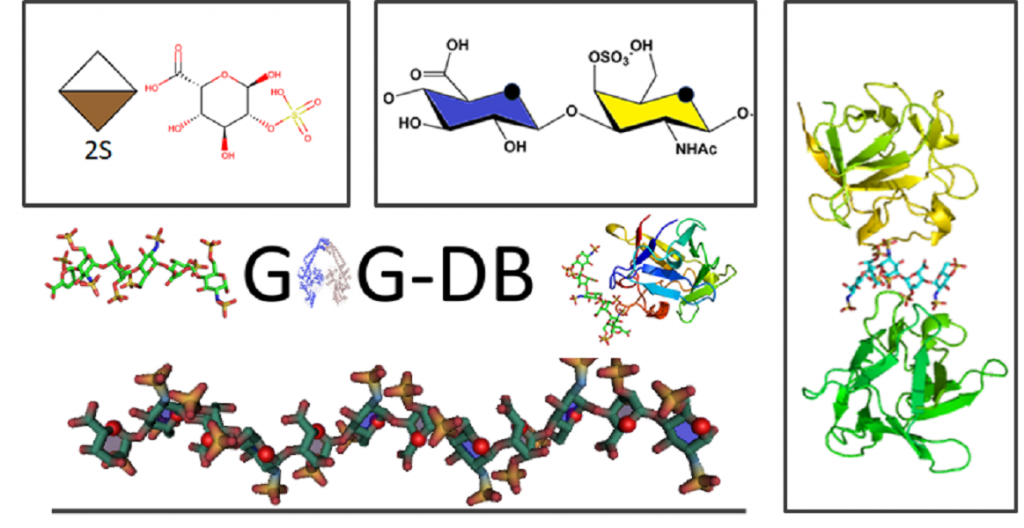Résumé:
« Glycosaminoglycans (GAGs) are complex linear polysaccharides. GAG-DB is a curated database that classifies the three-dimensional features of the six mammalian GAGs (chondroitin sulfate, dermatan sulfate, heparin, heparan sulfate, hyaluronan, and keratan sulfate) and their oligosaccharides complexed with proteins. The entries are structures of GAG and GAG-protein complexes determined by X-ray single-crystal diffraction methods, X-ray fiber diffractometry, solution NMR spectroscopy, and scattering data often associated with molecular modeling. We designed the database architecture and the navigation tools to query the database with the Protein Data Bank (PDB), UniProtKB, and GlyTouCan (universal glycan repository) identifiers. Special attention was devoted to the description of the bound glycan ligands using simple graphical representation and numerical format for cross-referencing to other databases in glycoscience and functional data. GAG-DB provides detailed information on GAGs, their bound protein ligands, and features their interactions using several open access applications. Binding covers interactions between monosaccharides and protein monosaccharide units and the evaluation of quaternary structure. GAG-DB is freely available »
L’article est disponible ici et GAG-DB est disponible gratuitement ici.



